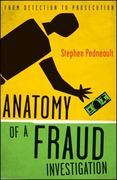Question
1.If the barriers to entry [________] and / or product differentiation [________], competition in a market will essentially [________]. a.decrease; increases; increase b. decrease; decreases;
1.If the barriers to entry [________] and / or product differentiation [________], competition in a market will essentially [________].
a.decrease; increases; increase
b. decrease; decreases; decrease
c.increase; decreases; increase
d. increase; increases; decrease
e. increase; increases; increase
f. decrease; decrease; increase
g.Not enough information
2.Please identify which of the following must be true, as if a firm is earning positive economic profit and producing at the profit-maximizing output level.
a.ATC [average total cost] < price; MC [marginal cost]= MR [marginal revenue]
b. TC [total cost] > TR [total revenue]; MC [marginal cost] > MR [marginal revenue]
c.ATC [average total cost]> price; MC [marginal cost]= MR [marginal revenue]
d.ATC [average total cost] = price; MC [marginal cost] < MR [marginal revenue]
e.ATC [average total cost] < AR [average revenue]; MC [marginal cost] > MR [ marginal revenue]
f. C and A
g. Indeterminate
3.It could be determined that a production possibility curve would [________] if the availability of an input decreased and would [________] if a lack of technology decreased production efficiency.
a. not move; shift outward
b. shift inward; shift inward
c.shift outward; shift outward
d.not move; not move
e.shift outward; shift inward
f. None of the above
4.What would be the most likely goal of a government that enacts a per-unit tax? [aside from raising revenue]
a.In order to increase profit and encourage production
b.In order to correct for a negative externality
c.In order to correct for a positive externality
d.In order to encourage production of private goods
e.In order to increase market competition
f. All of the above.
5.It could be said that a market in which private businesses do not pay all the production costs themselves shows / represents a ________ and will produce ________ than the socially optimal quantity.
a.negative externality; more
b.negative externality; less
c. positive externality; less
d.positive externality; more
e.natural monopoly; less
f. None of the above.
6.From the following options, which describes and characterizes a cartel?
a.Price collusion and output quotas
b. Price discrimination
c. Persistent normal profit
d. Productive efficiency but allocative inefficiency
e. A more competitive oligopoly
f. A cartel cannot be defined in no manner
g.All of the above
7.Review the table below and answer the question that follow. [table represents the quantity supplied & quantity demanded for a private good].
Price Quantity Supplied Quantity Demanded
$1 3 7
$3 4 6
$5 5 5
$7 6 4
What will be the maximum quantity of the good transacted in the market if one assumes that it becomes impossible to exclude non-payers from consuming this good?
a.1
b. 2
c.3
d.4
e.5
f.6
g.Indeterminate
8.Laura can produce gadgets at a lower opportunity cost than any other producer of gadgets. As a result, Laura must possess:
a.a better and essentially superior gadget making innovative technology
b. absolute advantage in the gadget production
c.comparative advantage in the gadget production
d.constant opportunity cost associated with the gadget production
e. more / greater factors of production devoted to the gadget production than any other of the countries
f.All of the above
9.What will happen to the market wage for the labor to produce a product, ceteris paribus, if consumer likings and preferences make / push the equilibrium price of a good/ product to increase steadily over time.
a.It will essentially increase and then increase back to its original equilibrium
b.It will essentially increase
c.It will not be affected as a whole
d. It will vanish as a whole, leaving everything else behind as it was
e.Insufficient information to determine
f. It will essentially decrease
Step by Step Solution
There are 3 Steps involved in it
Step: 1

Get Instant Access to Expert-Tailored Solutions
See step-by-step solutions with expert insights and AI powered tools for academic success
Step: 2

Step: 3

Ace Your Homework with AI
Get the answers you need in no time with our AI-driven, step-by-step assistance
Get Started


